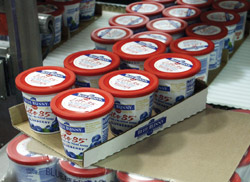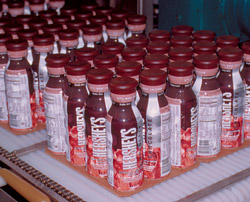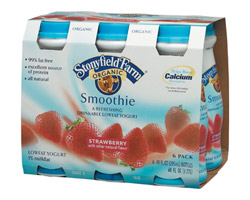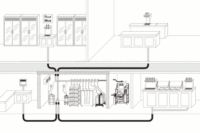
These warehouse and club stores have special packaging needs-they may require manufacturers to provide them with products that can be merchandised directly from the pallet for instance. Or they may place a prohibition or restrictions on returnable cases.
Whatever the situation, dairy processors should find that suppliers are offering a number of solutions to help them sell more yogurt, cheese, milk or ice cream in warehouse and club stores.
Multi-pack packaging is actually applicable to other sales channels, but it is particularly suited to the warehouse and club stores which are characterized by less frequent visits, and larger consumer purchases. Larger SKU sizes and larger-sized multipacks, are used to offer those consumers volume discounts.
For fluid milk, this means everything from cases that hold two or more gallons, to cartons containing 6, 12 or 24 single serve bottles.
For yogurt and other cup products, individual packages can be bundled into multi packs in a multitude of configurations that can be wrapped in clear plastic paperboard or printed film. Cheese can also be packaged in larger volumes, with secondary packaging. Ditto, of course for ice cream.

MeadWestvaco Packaging Systems, Atlanta, provides paperboard secondary packaging products to the beer, soft drink companies and most recently to the dairy industry.
Dave Hobbs, the company's national sales director says the soda and beer companies set a great example for how to use paperboard packaging for promotion and dairies are doing the same thing. "It's a great opportunity for yogurt or for multi packs of single serve milk," Hobbs says.
Mass merchandisers also expect less from manufacturers-less superfluous shipping packaging that is. Hobbs says the trick is to design secondary packaging that also forms a shipper.
"We can put a zipper strip on a distribution package so it can be torn open with one pull and set up for display," Hobbs says. The retailer then left with nothing but the zipped off strip.
Other solutions include a fold down panel that can serve as part of the shipping function of the packaging and then be folded down to be used in on-shelf merchandising.
Paperboard manufacturers have also come along way in developing substrate material that can withstand wet environments and the freeze-thaw cycles encountered throughout the supply chain, Hobbs says.

"With the increased role of the mass merchandisers, we are starting to see some significant changes in packaging which will have a broad impact on our industry over the next few years," Andersen says. "The mass merchandisers are really starting to focus on the final 50 feet of the distribution channel and they are finding that the traditional shippers are just not adequate. Most of the mass merchandisers want to get away from taking a knife to a box and converting it into some type of display tray. The problems of doing so are many: it is time consuming, frequently the resulting display tray does not look attractive, and it damages product."
Other solutions for warehouse shipping include collapsible crates, and film wraps that form bundles that can be palletized without cases.

